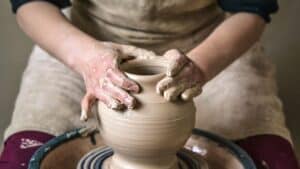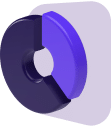Buying an ultra-quiet compressor means getting the best of both worlds. You get to enjoy the smooth airflow without having to muffle your ears.
Let’s take a look at some of the quietest airbrush compressors out there.
- Key Takeaways
- Main Recommendations
- Iwata-Medea Studio Series Smart Jet Pro
- Master Airbrush Cool Runner II TC-326T
- California Air Tools CAT-1P1060S
- Stealth Ultra Quiet Portable Air Compressor
- Badger Air-Brush Co. TC910 Aspire Pro Compressor
- Key Factors To Consider When Buying an Airbrush Compressor
- Features To Look for in a Quiet Airbrush Compressor
- How Loud Is an Airbrush Compressor?
- How Do I Make My Airbrush Air Compressor Quieter?
- What Size Air Compressor Do I Need for an Airbrush?
- Conclusion
Key Takeaways
The Iwata-Medea Studio Series Smart Jet Pro is a portable option that holds its pressure well, even in the face of humidity. However, it’s not the best in terms of tank capacity.
On the other hand, the Master Airbrush Cool Runner II TC-326T is good for topping off finished paints with graphic details.
The pressure capacity on the California Air Tools CAT-1P1060S works well with airbrushes and other small tools such as nail guns. It has a large tank that fills up surprisingly fast, and it’s very affordable.
If you’re looking for a heavy-duty and versatile tool to add to your workshop, the Stealth Ultra Quiet is your guy. It works well with attachments and comes with an impressive limit of 125 psi!
Similarly, we found the Badger Air-Brush Co. TC910 Aspire Pro to be a nice fit for cake decorations, taxidermy, and general artistry, thanks to its steady airflow.
Main Recommendations
The best portable air compressor: Iwata-Medea Studio Series Smart Jet Pro.
The best air compressor for beginners: Master Airbrush Cool Runner II TC-326T.
The best air compressor for people on a budget: California Air Tools CAT-1P1060S.
The best air compressor for professional workstations: Stealth Ultra Quiet Air Compressor.
The best air compressor for cake decoration: Badger Air-Brush Co. TC910 Aspire Pro.
Iwata-Medea Studio Series Smart Jet Pro
- Tank size: n/a
- Horsepower: ⅛ hp
- Maximum psi: 50 psi
- Decibels: 59 dB
What you’ll enjoy most about this single-piston compressor will be how low you can go on the pressure without suffering from pulsing or leakage. That’s a sign of an efficient moisture trap.
However, it doesn’t have an air tank but relies on a pump kick. At this price point, we expected a massive storage capacity.
The Jet Pro performs best with low-viscosity paints, making it ideal for painting but not for cake decoration, makeup application, or textile art.
Pros:
- Runs for a continuous hour without overheating
- Lightweight and highly portable at only 11.84 pounds
- Quick drainage with a single-touch bleed valve
Cons:
- Expensive
Master Airbrush Cool Runner II TC-326T
- Tank size: 0.8 gallons
- Horsepower: 1/5 hp
- Maximum psi: 57 psi
- Decibels: 47 dB
The moisture trap on the Cool Runner II isn’t as impressive as the Iwata Jet Pro, and you might spot a few leaks. However, it’s less expensive and comes with moderate tank capacity.
We also loved the “Air-On-Demand” feature that automatically turns the compressor on and off at preset values.
Overall, the Cool Runner II is a suitable starter for beginners since it balances well between cost and features. Plus, it’s an easy model to work with.
Pros:
- Comes with a dual airbrush holder
- Undetectable noise level with minimal compression run-time
- Provides a good value for money
Cons:
- Sometimes the package arrives missing items
California Air Tools CAT-1P1060S
- Tank size: 1 gallon
- Horsepower: 0.6 hp
- Maximum psi: 120 psi
- Decibels: 56 dB
California Air Tools claim that the CAT-1P1060S has a lifespan of 3000+ hours. This means that it is capable of handling moderate abuse.
The company also claims that the tank takes 50 seconds to fill up completely, and that actually checks out.
The pressure gauge isn’t easily adjustable, and you might have to settle for lower accuracy. However, at this price point, that doesn’t sound too bad!
Pros:
- Most affordable option on the list
- Quick pressure buildup in 50 seconds
- Covered by a one-year limited warranty
Cons:
- Doesn’t come with a moisture trap
Stealth Ultra Quiet Portable Air Compressor
- Tank size: 1 gallon
- Horsepower: 0.5 hp
- Maximum psi: 125 psi
- Decibels: 58 dB
Although the Stealth SAUQ-1105 has one of the highest noise levels on the list, it’s still quite tolerable. However, we wouldn’t recommend it for DIY projects at home.
Instead, it’s a better fit for a professional workspace since it’s quite a versatile tool that works well with nail guns, drills, tires, chisels, shears, and of course, airbrushes.
As a plus, it also has the strongest horsepower of all the other compressors on the list, making it perfect for heavy-duty jobs.
Pros:
- Versatile and compatible with multiple mechanical tools
- Suitable for heavy-duty projects
- Has an overload safety feature to protect the machine from overheating
Cons:
- A bit heavy at 30 pounds
Badger Air-Brush Co. TC910 Aspire Pro Compressor
- Tank size: 1 gallon
- Horsepower: 1/5 hp
- Maximum psi: 57 psi
- Decibels: 47 dB
Although the Badger Aspire Pro is more affordable than the Iwata-Medea Jet Pro, it can still be expensive for beginners. However, you get your money’s worth in features and stability.
We’re not sure if it’s the tank capacity, the efficient regulator, or a mix of both, but something about this compressor delivers very steady airflow with minimal pulsing and fluctuations.
It could be worthwhile to replace the pressure gauge. The original one goes up to 100 psi, while the maximum output is only 57 psi.
So, getting a gauge with a closer limit (around 60 psi) can make the regulation process easier.
Pros:
- Lightweight at only 18.08 pounds
- Transparent moisture trap for easier visibility and maintenance
- Covered by a one-year warranty
Cons:
- Inconvenient power switch placement
Key Factors To Consider When Buying an Airbrush Compressor
Finding the right compressor isn’t just about the machine features. You also need to evaluate the kind of work you do.
Here are some factors to help you choose better:
Working Area
The larger the surface area you need to cover with your tool, the more air storage you need.
For most DIY projects, a gallon is enough. However, to airbrush a car, you’d need to install multiple air tanks.
Project Type
Depending on what you need the compressor for, one product might be a better match for you.
For instance, fixing furniture means using nail guns, drills, and a touch of airbrushing.
In this case, getting a compressor with a wide compatibility range, like the Stealth SAUQ-1105 is a good idea.
Budget
There are way too many air compressors to consider, and your budget can help narrow down your options.
While Iwata and Badger make reputable tools, their products can be too expensive for many people. For a starter kit, try something like the Cool Runner II or the CAT-1P1060S.
Features To Look for in a Quiet Airbrush Compressor
It’s always nice to have some extra features that make your DIY job easier.
Here are the top features you need to look for:
Auto-Stop Function
Many air compressors now automatically turn off when the machine isn’t being used or when the pressure reaches a pre-set value. This helps you save on electric bills and keep the noise down.
If you can find a device with an auto-on feature as well, then you’ve hit the jackpot. The Master Cool Runner II and the Iwata-Medea Jet Pro both have these features.
Moisture Trap
Moisture traps help reduce the pulsations by cutting down on the water droplets that would’ve been released with the airflow.
If you work in a particularly humid space, models that lack a moisture trap might not be ideal for you.
However, getting a mini inline filter can be an affordable upgrade for models like the CAT-1P1060S.
Rubber Feet
It might sound like a trivial addition, but rubber feet can significantly reduce the noise and vibrations.
You find these types of stands in models like the Badger TC910 Aspire Pro and the Stealth SAUQ-1105.
How Loud Is an Airbrush Compressor?
Well, we know that explaining things in decibels can be a bit confusing. Let’s try to compare these numbers to more relatable noise levels.
For instance, a gunshot is a whopping 120 dB, while a regular compressor is 90 dB. However, a whisper is around 30 dB, and the typical conversational tone is 65 dB.
This puts all the compressors on this list somewhere between a whisper and a conversation.
How Do I Make My Airbrush Air Compressor Quieter?
Using a rubber stand or an absorbent mat can be an easy way to reduce the noise level on an air compressor.
For more advanced upgrades, you can build a soundproof box for the compressor or muffle the vibrations as shown below.
What Size Air Compressor Do I Need for an Airbrush?
The size of the machine doesn’t matter as much as its horsepower.
For airbrushing, there’s no point going over 1 hp. In fact, anywhere between 1/12 and 1/2 hp should be enough.
Conclusion
That’s a wrap on our guide for the quietest airbrush compressors in the market.
Overall, we recommend going for something with moderate tank storage, rubber stands, and a moisture trap.











